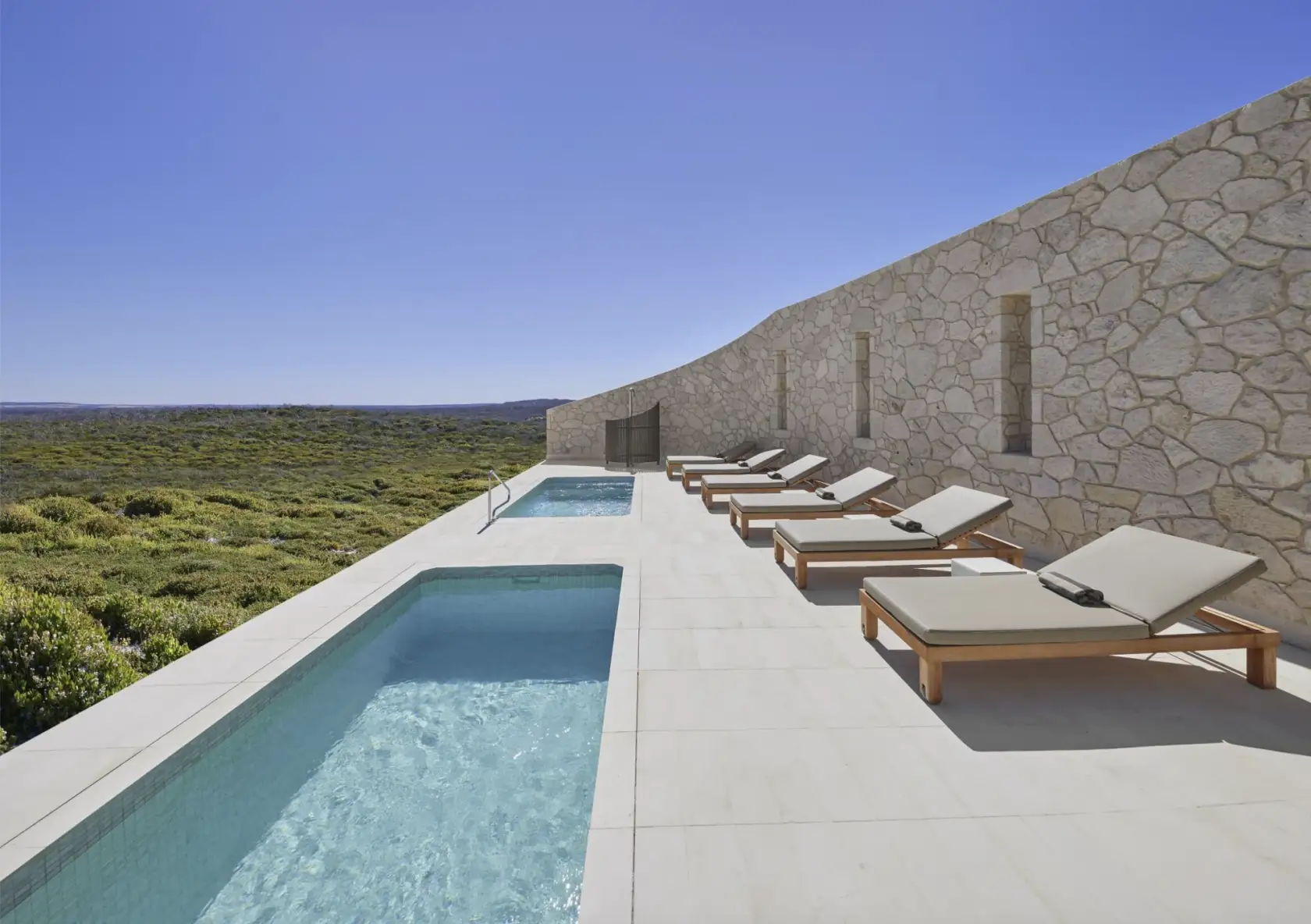

Clear the deck
Pool surround choices
One of the most important elements of a swimming pool build or renovation is the pool surround, or deck. It can really make or break the overall design and help create a natural flow between interior and outside spaces. The good news is, there are material choices to suit every taste and budget, giving you plenty of options to help bring your vision to life.
Material choices
Beyond aesthetics and economics, there are other factors that help narrow down the options. Your geographic location and the specific site of your pool make some materials more suitable than others, based on exposure to the elements and your local weather conditions.
You need to factor in pool chemicals and the sanitation system you use, as the deck will be in constant contact with pool water and needs to be able to withstand any damage.
From a safety perspective, think about who is using the pool and their relative mobility, or lack of it. It’s important that kids and adults of all ages – not to mention the four-legged members of the family – can move around the pool deck safely. Some materials hold heat, which can make for an uncomfortable walk to the water, while others become slippery when wet and are a safety risk.
Concrete
Concrete is one of the most durable choices. It’s also pretty versatile and can be coloured and finished to suit any design style – and to look like many other materials. Textured concrete will give you the grip you need and, provided it is properly sealed, it’s easy to maintain. You should get many years out of this option.
Natural stone, pavers and tiles
There’s no denying that natural stone and paving are good looking choices. Depending on the specific stone, these are generally hard-wearing, so you won’t need to worry about the lifespan of your deck.
These options are more expensive to lay than concrete, as the process is far more labour intensive and the material costs are higher. It’s important that installation is done by an experienced professional, as you don’t want pavers or tiles lifting and creating uneven surfaces a couple of years down the track.
Natural stone and pavers will handle exposure to the elements and generally perform well against chemical contact if properly sealed. Some natural stone and paving options may hold the heat, something to consider if your deck is located in full sun throughout the year. Speak to your builder about the best non-slip alternatives – some stone fairs better than others here, though it may be possible to apply texture to naturally smooth material to improve grip.
Timber
Timber decking may be visually appealing – it gives off a bit of a rainforest vibe with the right planting – but it is a choice that requires lots of upkeep. You’ll need to oil or paint it at least once or twice a year and should probably completely strip it back and re-seal it every three or four years if you want to give it any hope of a long life.
It’s not a great performer when it comes to chemical resistance – both salt and chlorine can wreak havoc. It also degrades far more quickly than other options when exposed to the sun, so cracking, warping and splintering can be an issue. For obvious reasons, timber isn’t well suited to locations where bush fires are a threat.
Composite
Composite decking is a manufactured alternative to natural timber. Quality levels vary according to the material construction, which is generally some combination of wood fibre and recycled plastic. The ratio of wood to plastic will deliver products of differing suitability – for example, more plastic may make the product more durable but also more likely to retain heat. If you want to go down the composite road, do your homework. These products are produced both on and offshore, with varying degrees of quality from both. Be sure to get the specific material makeup details from the manufacturer before you commit to anything and ask your builder for client references if you want to hear first-hand experiences.
Generally speaking, composites fall behind other alternatives when it comes to fire resistance, chemical resistance and slip.
Aluminium decking
A low- (almost no-) maintenance option, aluminium decking is made to look just like timber. It overcomes many of the problems associated with timber and composite decking choices, as the extruded, powder coated finished product is strong, non-slip, fire safe and capable of withstanding chemicals and exposure to the elements.
It may not offer the sleek finish of a natural stone design, but aluminium is a serviceable and economical option that can mimic the aesthetic of timber without all the hassle.
Outlay versus ongoing
Your pool surround plays a huge role of the overall look of your outdoor space – often as much as the swimming pool or spa itself – and can be the difference between living with backyard oasis or a barren landscape.
If you are looking to update and narrowing down the multitude of choices based on lifestyle, location and budget, don’t forget about the long-term implications. A cheaper initial choice may seem like a good idea, but costs can quickly add up if the maintenance requirement is high. And don’t forget the drain on your time – you’d be surprised how quickly six months can pass when it’s time to treat your deck again.
As with any building project, get as much information and advice as you can upfront. Think about how you want to use the space, who will be enjoying it with you and how long you expect to get from the installation. Every site is different, but the more you know up front, the more likely you’ll be happy with the result.
